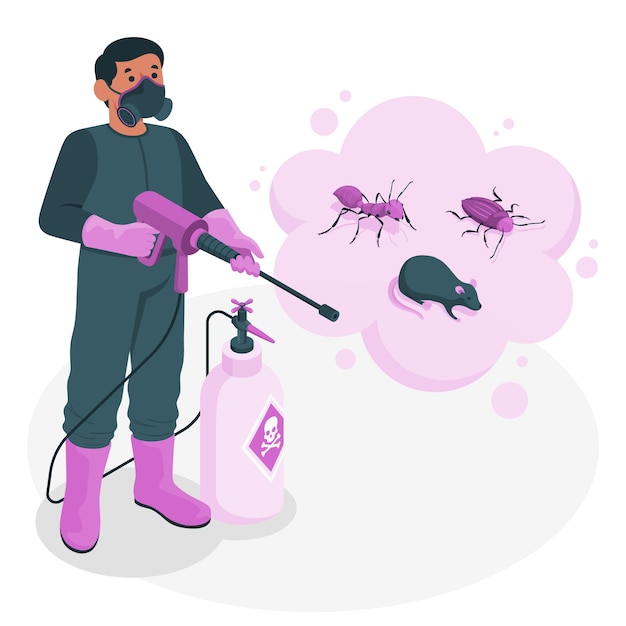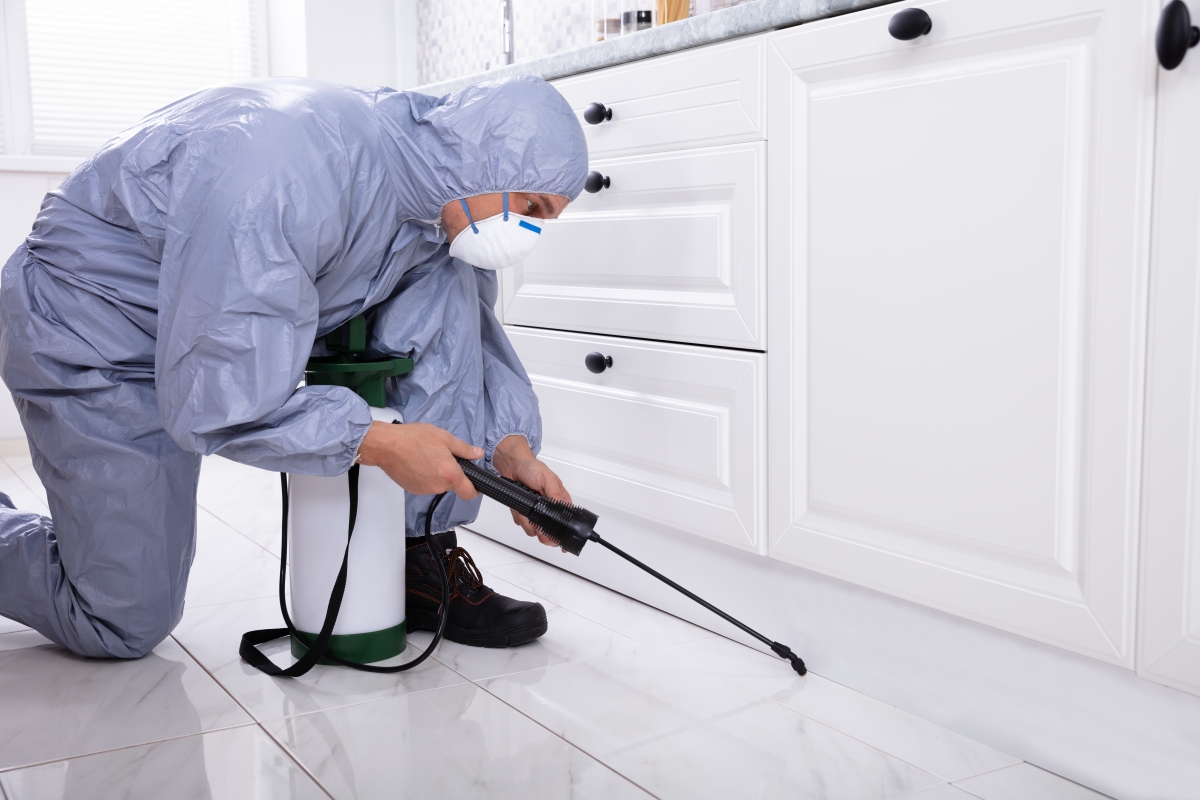Safe and Trusted Insect Control for Lasting Protection
Efficient bug administration needs a diverse technique that stabilizes environmental stability with the requirement for efficient insect suppression. The nuances of these methods might not be immediately clear, prompting a more detailed exam of the techniques that can lead to lasting bug control results.
Comprehending Bug Control Techniques
Insect control includes a variety of approaches intended at managing and eradicating undesirable pests and rodents that can threaten both wellness and property. Recognizing these techniques is important for effective parasite administration.
The primary groups of bug control methods consist of mechanical, biological, and chemical approaches. Mechanical approaches include physical obstacles and traps to stop parasite entrance and capture unwanted varieties. For example, using displays on windows or using sticky catches can considerably reduce bug populations without presenting hazardous materials.

Chemical parasite control is often the most acknowledged technique, making use of chemicals to remove pests. These chemicals can be effective however need to be made use of with care to stay clear of damaging effects on non-target species and the environment.
Benefits of Eco-Friendly Solutions
How can environment-friendly options change bug control techniques? The fostering of green parasite control approaches supplies countless advantages, dramatically boosting the performance and safety and security of bug administration (exterminator coquitlam). These options use natural ingredients, lowering the dependence on harmful chemicals that can position risks to human wellness and the atmosphere. This shift not only shields households and animals however also minimizes the possibility for soil and water contamination.

An additional advantage is the positive influence on local biodiversity. Green services are made to target certain pests while protecting helpful bugs and wild animals, promoting a well balanced community. This technique straightens with the expanding customer demand for sustainable methods, improving the online reputation of insect control carriers.
Integrated Pest Administration Methods
The execution of green solutions naturally leads to the adoption of Integrated Insect Management (IPM) techniques, which additionally improve bug control effectiveness. IPM is an alternative technique that integrates several techniques to handle bug populations while reducing environmental impact. This strategy emphasizes the usage of organic, social, mechanical, and chemical controls, making sure a sustainable and well balanced approach of bug administration.
One essential aspect of IPM is the complete analysis of bug activity and ecological problems. By keeping an eye on insect populations and recognizing their life process, professionals can execute targeted interventions that interfere with the bug's habitat or lifecycle, decreasing reliance on chemical pesticides. Furthermore, cultural practices such as crop turning and environment manipulation can substantially decrease bug establishment and recreation.
One more essential part is the usage of biological control representatives, such as useful pests or bacteria, which can naturally subdue parasite populations. When chemical applications are necessary, IPM prioritizes using low-risk chemicals and uses them precisely, minimizing direct exposure to non-target microorganisms and human beings.
Incorporating IPM techniques not just enhances bug control effectiveness however additionally promotes a more secure ecosystem, straightening with the expanding demand for sustainable methods in parasite monitoring.
Safe Practices for House Owners
Understanding the importance of secure practices in insect control can equip homeowners to efficiently manage insect concerns while safeguarding their health and wellness and the atmosphere. Carrying out non-toxic techniques and safety nets is vital in lessening exposure blog here to hazardous chemicals.
Property owners need to first evaluate their setting for conditions that attract bugs, such as standing clutter, water, and food waste. Consistently cleaning and sealing access points can prevent bugs from invading the home. Utilizing all-natural deterrents, such as crucial oils or diatomaceous earth, can offer efficient alternatives to chemical pesticides.
When chemical therapies are necessary, home owners need to go with items that are particularly labeled as risk-free for household use. It is crucial to follow application guidelines thoroughly to avoid overexposure. Moreover, utilizing targeted treatments in areas where parasites are identified, as opposed to covering splashing, can dramatically decrease chemical usage.
Lastly, keeping open communication with insect control specialists is vital. House owners ought to ask about dig this the safety of products made use of and demand green alternatives whenever feasible. By adopting these secure techniques, property owners can create a healthier living setting while efficiently taking care of bug problems.

Tips for Long-Term Protection
Establishing an insect management method that stresses long-term defense can greatly enhance look at this website the efficiency of the risk-free techniques previously reviewed. To attain this, house owners need to carry out regular evaluations of their residential property, focusing on hidden locations such as attic rooms, cellars, and crawl spaces. Early discovery of bug activity is essential in avoiding invasions from holding.
These methods decrease attractants that draw insects right into the home. Securing entry factors, such as fractures around doors and windows, can properly block prospective bug access.
Landscape design must also be considered; keeping plants trimmed and preserving a distance between greenery and the home reduces concealing spots for bugs. Using natural deterrents, such as essential oils or diatomaceous planet, can even more dissuade problems without considering rough chemicals.
Last but not least, working together with a professional bug control service for periodic analyses can offer an additional layer of safety. These experts can supply tailored recommendations and advanced treatments, guaranteeing that your home remains safeguarded against pests in the long-term.
Conclusion
To conclude, reliable and safe bug control needs a complex strategy that highlights green techniques and incorporated parasite management. By implementing natural deterrents, carrying out regular evaluations, and keeping appropriate hygiene, building proprietors can substantially reduce insect populaces while shielding beneficial insects and the setting. Cooperation with specialist pest control services boosts the performance of these approaches, making sure customized options that offer enduring protection and assurance against future infestations.
Effective insect monitoring needs a multifaceted approach that balances ecological stability with the requirement for reliable pest reductions. The adoption of environment-friendly parasite control techniques offers various advantages, dramatically boosting the performance and safety of bug management.The execution of eco-friendly services naturally leads to the adoption of Integrated Insect Administration (IPM) strategies, which even more improve insect control efficiency. exterminator coquitlam. By checking pest populations and identifying their life cycles, specialists can carry out targeted interventions that interrupt the bug's habitat or lifecycle, lowering dependence on chemical pesticides.In verdict, trustworthy and secure bug control requires a diverse strategy that emphasizes green techniques and incorporated bug administration